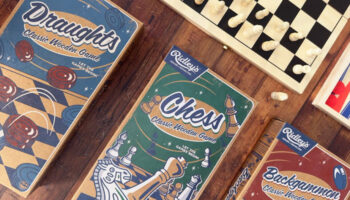Will Amazon’s new Counterfeit Crimes Unit benefit toy inventors?

It’s news that could make Amazon the most tip top ‘Top Cat’ among toy and game designers, inventors and parents worldwide.
The retailer has announced the establishment of a Counterfeit Crimes Unit that will be tasked with bringing copycats to justice.
The Counterfeit Crimes Unit is composed of former federal prosecutors, data analysts and investigators and will be charged with bringing sellers that break not only law, but Amazon’s policies, to justice.
In their recent press release Amazon say it’s “new, global team is dedicated to investigating, finding, and launching legal action and criminal referrals against counterfeiters.”
A joint report published in 2019 by the OECD and EUIPO suggests that trade in counterfeit and pirated goods accounts for 3.3% of world trade and is steadily rising. In the UK alone, this costs the economy billions of pounds each year and many of the sales are made through online outlets.
Of counterfeit items seized in 2016, footwear was the most prevalent making up 22% of goods, with toys slightly more common than jewellery and pharmaceuticals at 3%. This may not sound much, but it equates to millions of counterfeits, and who knows how many of these slip through the net and go unnoticed?
Of course, in the toy and game industry, it’s not just counterfeits that are a problem, but lookalikes too. Sometimes a product is so obviously a copy that the owner of the original work can enforce its intellectual property rights, and thereby get the lookalike product off the shelves, and even some recompense for lost sales.
Just recently, Spin Master Corp have won record damages worth 15.5 million renminbi (£1,765,680.00) in the Suzhou Intermediate People’s Court against a Chinese company that was making copies of its Bakugan children’s toys.
In other cases, however, it’s not so clear cut.
The manufacturers of lookalike products are ingenious when it comes to making small changes that are often indiscernible to consumers, but nevertheless enough to discourage legal action against them.
And the manufacturers of genuine products are often resigned to having their toys and games knocked off because they know the law doesn’t always help them as much as it should.
If there are weaknesses in your intellectual property protection, copycats will find it. When it comes to intellectual property, any copycat can avoid trade mark infringement by simply adopting a different name; most toys and games are not patentable; and so that only leaves designs and copyright.
Design registration is hopelessly under-used by businesses (and often badly used), and copyright requires proof of copying. So, many businesses leave themselves horribly exposed and at the mercy of copycats.
But it isn’t just sales that get hit; reputations do too.
Many consumers simply do not realise they bought a fake. Even if they do, they think it must be the same product, simply wearing different clothes. Copycat products are often inferior quality and often fail to meet safety standards, but consumers may not realise this and associate poor quality with the genuine article.
Last month, TIE reported that they had bought nearly 200 toys from across four well-known websites. They then checked them all for compliance against EU safety standards. They found that a shocking 97% of the toys were non-compliant with EU law and 76% of those tested were unsafe for children.
This echoes the findings of an earlier study by the British Toy and Hobby Association which found 58% of toys that they assessed were illegal to sell in the UK as they failed to meet safety regulations and 22% had serious safety failures “which could cause serious injury or death to a child”.
Tougher action by internet giants like Amazon will be welcomed by many. Not only should the dedicated Counterfeit Crimes Unit go a long way to stopping copycats riding on the coat tails of others and taking money from the pockets of designers and inventors, but it’s a much needed step in the right direction for helping to protect the reputations of businesses and the safety of children.
But there’s still more that can be done.
There is an urgent need to stop lookalikes too. This is why we’ve teamed up with Mojo Nation, as well as designers and retailers, to create a Code of Conduct for the toy and game industry. The goal is to discourage the manufacture, stocking and sale of fake toys and games and to make it easier for consumers to spot and avoid fakes.
We believe we can achieve the former by achieving the latter. Of course, we need the support and goodwill of the industry – but, judging by the feedback we have had so far, we have that in abundance.
We plan to use a joined-up approach, with everyone represented, in a forum made up of retail buyers, designers and heads of R&D. Under the Code, manufacturers will agree not to create copycat products and retailers will agree not to stock clear copycat products.
Our vision is of a pioneering industry that promotes a fair and safety conscious trading environment that recognises and rewards the intellectual investment of toy and game creators, even where the law may be too blunt an instrument to be of much help.
For more information please contact Victor Caddy, Trade Mark Attorney and Director on +44 (0)20 3146 7888 or email [email protected].
—-
To stay in the loop with the latest news, interviews and features from the world of toy and game design, sign up to our weekly newsletter here























